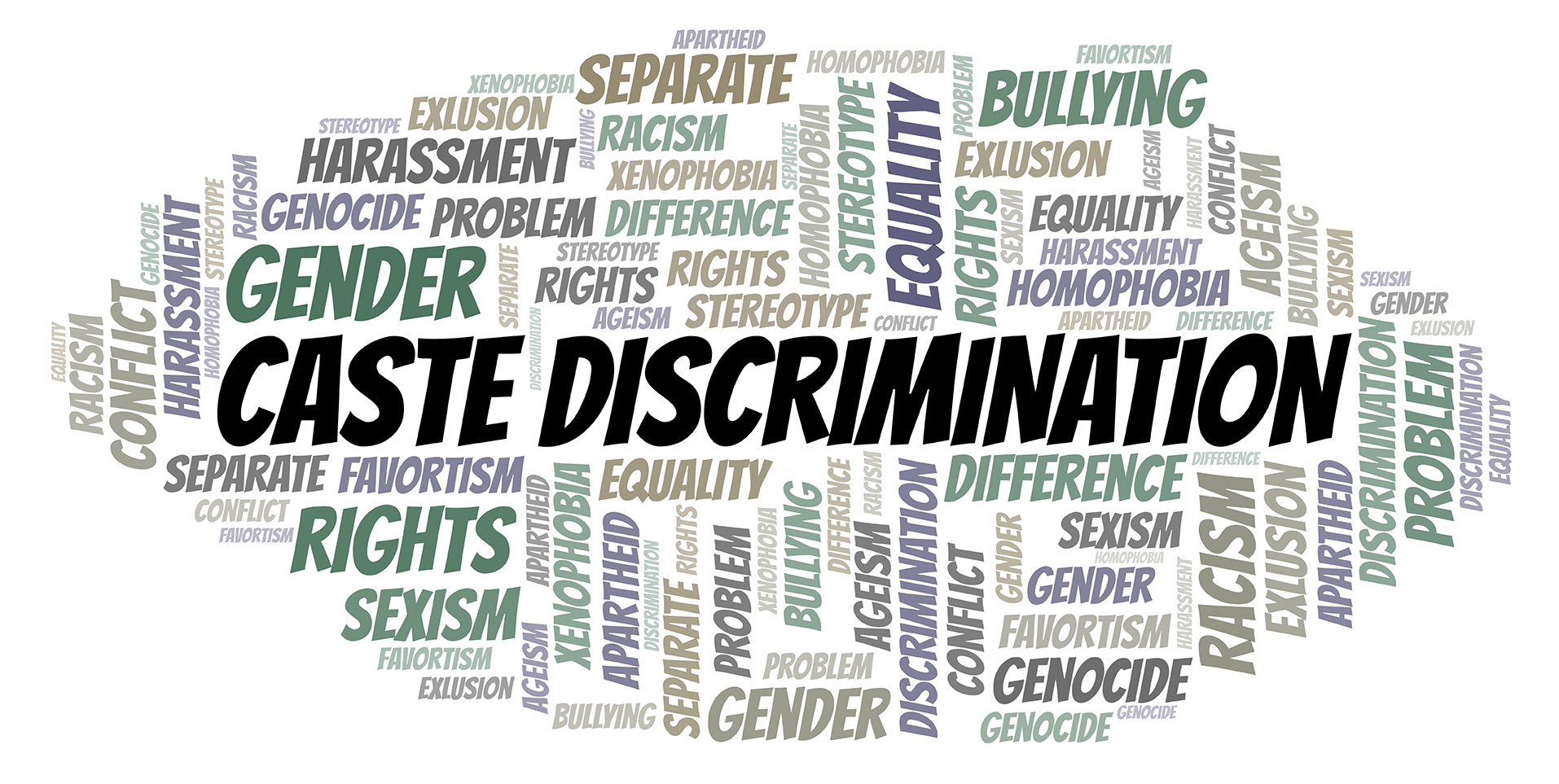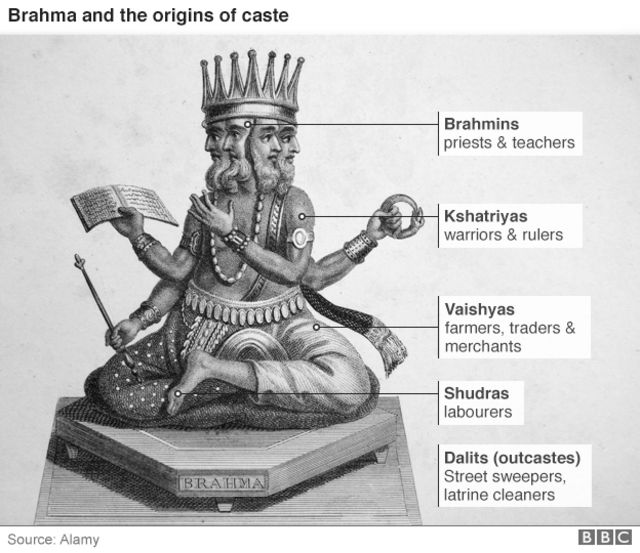Caste systems are closed social stratification systems in which people inherit their position and experience little mobility.
Caste is an elaborate and complex social system that combines some or all elements of endogamy, hereditary transmission of occupation, social class, social identity, hierarchy, exclusion, and power. Caste as a closed social stratification system in which membership is determined by birth and remains fixed for life; castes are also endogamous, meaning marriage is proscribed outside one’s caste, and offspring are automatically members of their parents’ caste.
Although India societies and mainly Hinduism is commonly associated with caste systems, this system can be seen in many different parts of the world and in many different cultures.
The word "Castas" was first used in the 16th Century in the colonial Spain in regions of South America and Central America. In India the word Caste was first used by the Portuguese in the 17th Century.
HINDUISM:
Caste is often associated with India. Historically, the caste system in India consisted of four well known categories (Varnas): Brahmins (priests), Kshatriyas (warriors), Vaishyas (commerce), Shudras (workmen). Often these castes are decided by the child's birth and decided by their father's caste. People left out of these four caste classifications were called “outcasts” or “untouchables” and were shunned and ostracized.
MUSLIM:
Indian Muslims are stratified into three main castes. At the top of the pyramid are the Ashrafs (literally, the ‘nobles’, who trace their ancestry to inhabitants of the Arab peninsula or Central Asia or are converts from Hindu upper castes), Ajlafs (literally, the ‘commoners’, who are said to be converted from Hindu low castes) and Arzals (literally, the ‘despicable’, who are said to be Dalit converts).
In short, Ashrafs are the Brahmin equivalent, Ajlafs are the Vaisya equivalent and Shudras, and Arzals are the Atishudras or Dalit equivalents of Islam.
CHRISTIANITY:
Even in Christianity there have been periods of times with prevalent caste systems. For example in Medieval France the three estates used before the French Revolution were a caste system based on birth and religious standing: the first estate consisted of clergy, the second of nobility, and the third of commoners. These estates were endogamous (meaning one could only marry within their own class) and there was little mobility between them.
In all these systems castes created a divide between people. Many opportunities were not available to people just due to their caste that they could not even choose. Kshatriyas had to participate and fight in wars even if they did not want to. Only Brahmins had access to some knowledge no matter what their ambitions were and even when they wanted to study. Due to such restrictions placed by the society, peoples' lives were decided by their birth and they could not do anything to change their fate. People could not marry others from different castes, could not have basic access to education, did not have the same money earning oppurtunities and moreover had to face constant discrimination and inhumane treatment their whole life.
In India these problems are still prevalent in rural parts. Children face discrimination in schools during midday meals where they are fed from different utensils or in classes themselves where they sit separately from children form other castes.
Understandably caste-based discrimination is therefore banned in India.
According to article 14 of the Indian constitution, the state shall not deny equality to any person before the law or the equal protection of the laws within the territory of India. Article 15 prohibits the state from discriminating any citizen on ground of any religion, race, caste, sex, place of birth or any of them.
Article 17 states that untouchability is abolished and its practice in any form is forbidden. The ‘Protection of Civil Rights Act, 1955’ was the first Indian law that came into force to provide punishment for the preaching and practice of ‘Untouchability’ and for any mater connected with it. In 1989, the Government of India enacted ‘the Scheduled Castes and Scheduled Tribes (Prevention of Atrocities) Act’, which recognised various kinds of acts of violence and discrimination inflicted upon the Scheduled Castes and the Scheduled Tribes by non-scheduled castes and non-scheduled tribes as punishable offences. It also provides for provision of special courts at the district level to try the offences under this Act.
Yashwin Saraswat
Chemical Engineering
7th Sem



Comments
Post a Comment